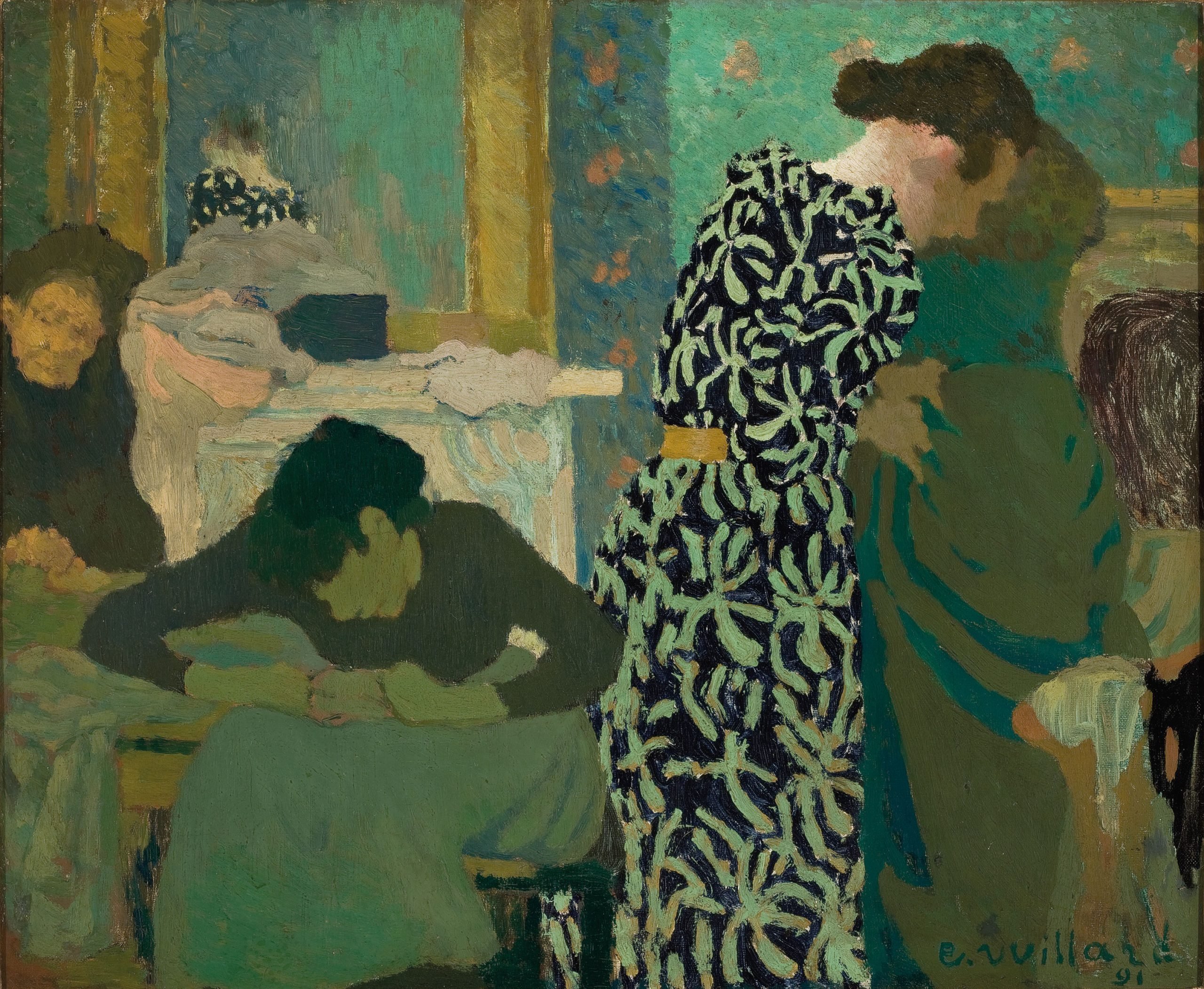
What artwork hangs across from Mona Lisa? What lies downstairs from Van Gogh’s Sunflowers? In “The Permanent Collection,” we journey to museums around the globe, illuminating hidden gems and sharing stories behind artworks that often lie beyond the spotlight.
Édouard Vuillard, The Flowered Dress (1891)
Museum of Art of São Paulo
Chosen by: Laura Cosendey, assistant curator
“Vuillard is not one of the most highlighted artists of the 19th century,” said Laura Cosendey, an assistant curator at the Museum of Art of São Paulo (MASP), who is currently curating the upcoming show Francis Bacon: The Beauty of Meat. Yet, the artist’s green tinged, murky family portrait The Flowered Dress caught Cosendey’s eye long before she even joined the museum team in 2019.
“It’s a very flat image but it’s organized into layers, allowing the dress to become the protagonist,” described Cosendey. “Yet, the three women in the painting are his sister, his mother, and his aunt. They were seamstresses and we see them at work in their home, but we cannot see their faces clearly, so it’s this interesting balance between intimacy and non-intimacy
Indeed, the painting is composed of these out-of-focus elements. The young woman in the foreground is roughly blocked out and ensconced in shadows, while the aunt in the background is not much more than a blocked out blur at the far edge of the canvas. Even the woman wearing the dress is anonymized, her hands and face are given little detail, allowing the dress, with its bright colors and defined pattern, to push forward, giving the painting an incredible, unique kind of dimensionality.
“There is a bond that can develop with an artwork when our experiences with them aren’t mediated,” said Cosendey, referring to the immediacy with which one encounters paintings in the museum’s picture gallery. The building was designed by the modernist architect Lina Bo Bardi, who invented a unique method for displaying artworks. Instead of hanging on walls, paintings are fixed to crystal easels, creating an impression that they are floating. The labels for the paintings are placed on the back of these invisible easels.
Cosendey picked this piece out of the 10,000 works that the museum has in its permanent collection. Though she said that the work represents the collection’s emphasis on the figure and the portrait, ranging from European works by the likes of Vuillard to the paintings of the contemporary Brazilian artist Dalton Paula, the truth is, it’s personal.
“I saw it for the first time on a trip I took to São Paulo years before I moved here,” said Cosendey. “I was immediately seduced by it.”